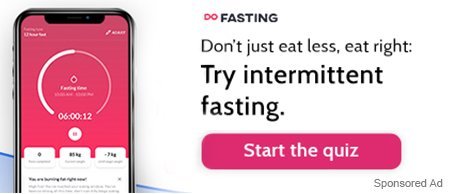What is the 5/2 Diet | Benefits | How to Start the 5/2 Diet | Tips for Eating | Who Shouldn’t Try the 5/2 Diet | Potential Side Effects
Fasting has a long history and has proven to have various health benefits. Fasting is not a diet but is an eating regime and should be included in every healthy individual’s lifestyle. The unique feature of the 5:2 diet (5/2 diet) is you can eat pretty much whatever you like for five days of the week. It is a simple weight loss strategy that is easy to follow.
A study conducted on evolutionary principles says that the agricultural revolution and modern technologies have dramatically reduced or eliminated vigorous exercise and fasting. The study results indicate that intermittent fasting and exercise enhance your critical thinking and are also essential for optimal health. Fasting reduces the risk of diabetes and cardiovascular disease, also the occurrence of cognitive impairment and Alzheimer’s disease.

In the 5:2 diet, also known as the 5/2 fasting diet or 5 2 fasting diet, by cutting down your calorie intake just for two days, you can lose weight and reduce your risk of chronic diseases. People find it easier to stick to as it gives them the freedom to eat normally for 5 days of the week.
What is the 5:2 Diet?
5/2 (5:2) intermittent fasting is a modified fasting regime that allows the consumption of 20–25% of energy needs on your fasting days. You will follow severe energy restrictions for 2 non-consecutive days a week with eating as desired for the remaining 5 days. The 5:2 diet is a type of intermittent fasting. Generally, a person eats 2000 calories a day; hence eating 500 to 600 calories on fasting days is considered ideal in this diet.
Another important thing to note is, fasting should be done on alternate days and not on consecutive days. This helps to balance your nutritional requirements. You should space out your fasting days and fast, for example, on Mondays and Thursdays or Wednesdays and Saturdays. This diet gives you more flexibility and is simple to follow.
your healthy life span and prevents oxidative and metabolic stresses.
The 5:2 diet makes you aware of your eating habits and meal portions. You learn to follow mindful eating and choose nutritious food with this diet.
Intermittent fasting and alternate-day fasting brings similar results as that of daily calorie restrictions. Periodic fasting pattern is believed to help in weight loss, cardiovascular health, and improved insulin resistance.
A 12-week controlled weight-loss trial revealed that the modified fasting regime like the 5/2 diet combined with physical exercise brings significant weight loss.
For a more detailed explanation of the health benefits of intermittent fasting, read here.
Also want to see the 5:2 Intermittent Fasting results page – click that link.
How to Start the 5:2 Diet?
The 5:2 is a simple and straightforward diet. You will choose two non-consecutive days of the week for your fasting. On those fasting days, you will eat small meals, restrict your calorie intake, and on other days you will eat normally.

By choosing non-consecutive days for fasting, you avoid feeling emotional exhaustion or hunger; this increases your chances of sticking to this diet regime. When you follow the 5:2 diet regularly, it becomes easier and more satisfying. Continuing the same diet routine for at least three months is recommended to experience any positive results.
However, on non-fasting days eating normally means eating as much as your body needs for daily functioning and not overindulging. You should avoid binge eating and choosing unhealthy processed foods on your eating days. If you eat uncontrollably, you will not get the results as expected.

Tips for Eating on Fasting Days
The 5:2 fasting diet should be high protein, moderate fat, low carbohydrate, and a low fiber diet. With this type of micro and macronutrient intake, the 5:2 is believed to be a safe and acceptable weight-loss diet strategy.
There is no perfect way of eating on fasting days. Every individual is different, and you will have to plan your meals based on your needs. Some prefer light breakfast to start the day while some delay their first meal to get through the day.
You can choose any of these eating patterns;
- Three small meals as breakfast, lunch, and dinner
- Having only breakfast and late lunch
- Having a single meal as dinner
The main aim is to reduce your calorie intake. Choose high-fiber, high-protein meals that will keep you full for longer.
You can consider eating;
- Vegetables
- Yogurt
- Boiled eggs
- Lean meat
- Grilled fish
- Soups
- Non-caloric tea or coffee
- Plenty of water
There is no specific way of eating; you can choose based on your preference. If you need help in planning suitable meals for you, you can select a customized meal plan here.
Avoid eating processed food, excess fat, and refined carbohydrates to limit your calorie intake. Remember, you can drink water and other non-caloric beverages on your fasting days. Take a look at intermittent fasting safe drinks here.
Who Shouldn’t Try the 5:2 Diet?
Intermittent fasting and 5:2 diet generally are safe for healthy adults. However, people who should avoid any kind of dietary restrictions or fast are;
- people with a history of eating disorder
- pregnant and lactating mothers
- someone having a nutritional deficiency
- a person experiencing extreme variations in blood sugar
- children and teenagers
If you have any underlying health condition, then consult your doctor before following any fasting routine. But if you are a healthy adult and want to shed some weight and live a healthy lifestyle, the 5/2 diet is a great option.

Potential Side Effects of the 5:2 Diet
Generally, you may experience headaches, severe hunger, fatigue, irritability, difficulty in concentrating, and mood swings during any fasting diet. During the 5:2 diet, you may feel extreme hunger after fasting days, leading to unintentional overeating. Also, making unhealthy food choices can result in weight gain.
If you experience extreme hunger, try to drink water or tea and meditate or take a nap. Such side effects will disappear once your body gets accustomed to your diet routine. If you experience any severe symptoms, consult your healthcare provider.
You can also check our guide on Intermittent Fasting side effects and how to overcome them.
Final Words

I love the 5:2 Diet, its a great way to mix up your routine, and still reap the benefits to ensure your weight loss, energy increase, and all of the benefits that come with fasting. Those low calorie days really kick start your weight loss!
It is a well-known fact that every fasting interval can improve metabolic biomarkers and thus enhance insulin sensitivity. Adapting to a 5:2 fasting regime is a feasible and sustainable diet strategy to promote overall health. It is a simple diet and has no complicated meal planning or calorie counting.
You need to make conscious efforts to adapt to the 5:2 diet and make healthy food choices. In a way, it helps you in mindful eating and brings a positive impact on your health. The results of this diet are promising. If you can follow regular eating and not eating intervals comfortably, it can bring great results.
I recommend starting here to learn more fasting – with the Complete Guide to Intermittent Fasting.
Also need help fasting? Check out these Top 6 Fasting Mobile Apps we recommend to help you on your journey.











